Ch 8 Cell: The Unit of Life
1/134
Earn XP
Description and Tags
This set covers every single thing one needs to memorize from the chapter. I've also attached images, links wherever required to understand that particular term in a better manner. All the best to whoever uses this set!
Name | Mastery | Learn | Test | Matching | Spaced |
|---|
No study sessions yet.
135 Terms
What is a cell?
The basic structural and functional unit of all living organisms
Unicellular organisms are capable of:
Independent Existence
Performing the essential functions of life such as reproduction, metabolism, and response to stimuli.
Who coined the term ‘cell’?
Robert Hooke
Who first saw and described a living cell?
Antonie van Leeuwenhoek
Who discovered the nucleus?
Robert Brown, who observed it in plant cells.
What did Schwann do?
Botanist, he reported that all plants are formed as a product of a large number of different kinds of cells, which form the tissues of the plant.
What did Schwann do?
Zoologist, he reported that all plant and animal cells have a unique boundary which we call the plasma membrane and hence stated that all organisms are composed of cells and a product of cells.
Who formulated the cell theory
Schleiden and Schwann
What could the cell theory not explain?
That how new cells were formed
Who cleared the drawback of the cell theory?
Rudolph Virchow
What did Rudolph Virchow do?
He proposed that all cells arise from pre-existing cells, addressing a key limitation of the original cell theory.
What is the current cell theory understood as?
All living organisms are composed of cells and products of cells
All cells arise from pre existing cells
Omnis cellula e cellula
“All cells arise from pre existing cells”
Describe the basic structure of an onion cell
Distinct cell wall as it’s outer boundary
Underlying cell membrane
Inside, a dense membrane bound structure called the nucleus
Contains chromosomes which in turn contain genetic material, DNA.
A semi-fluid matrix occupying the volume of the cell, and carrying out metabolic reactions
Describe the basic structure of a cheek cell
Outer cell membrane as the delimiting structure of the cell
Inside, a dense membrane bound structure called the nucleus
Contains chromosomes which in turn contain genetic material, DNA.
A semi-fluid matrix occupying the volume of the cell, and carrying out metabolic reactions
What are eukaryotic cells?
Cells with a membrane-bound nuclei are called eukaryotic cells
Contain membrane-bound distinct structures called organelles
More developed in nature
What are prokaryotic cells?
Cells in which a membrane-bound nuclei is absent.
Does not contain membrane bound organelles
Name some non-membranous organelles
Ribosomes (plants, animals)
Centrosome (animals only)
Where are ribosomes found?
Cytoplasm
Mitochondria
Chloroplasts (In plants)
Rough ER (In animals)
Smallest Cells?
Mycoplasmas (length: 0.3 micrometre)
Length of bacteria?
3-5 micrometre
Largest isolated cells?
Ostrich egg
Diameter of human RBCs?
7 micrometre
Some of the longest cells?
Nerve cells
The shape of the cell varies due to ____________
The function they perform

Identify the cells, describe their shape
Red blood cells
Round and biconcave
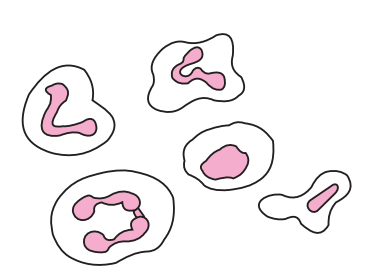
Identify the cells, describe their shape
White blood cells
Amoeboid (irregular)

Identify the cells, describe their shape
Columnar epithelial cells
long and narrow

Identify the cells, describe their shape
Nerve cells
branched and long
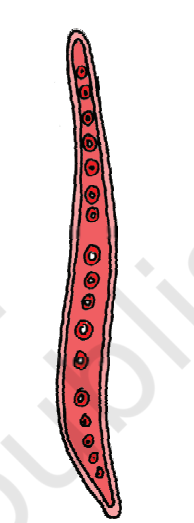
Identify the cells, describe their shape, where are they present?
Tracheids
elongated
xylem
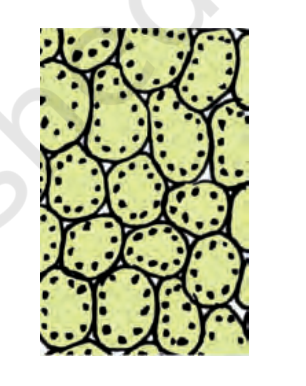
Identify the cells, describe their shape, where are they present?
Mesophyll cells
Round and oval
Between the upper and lower epidermis of the leaf
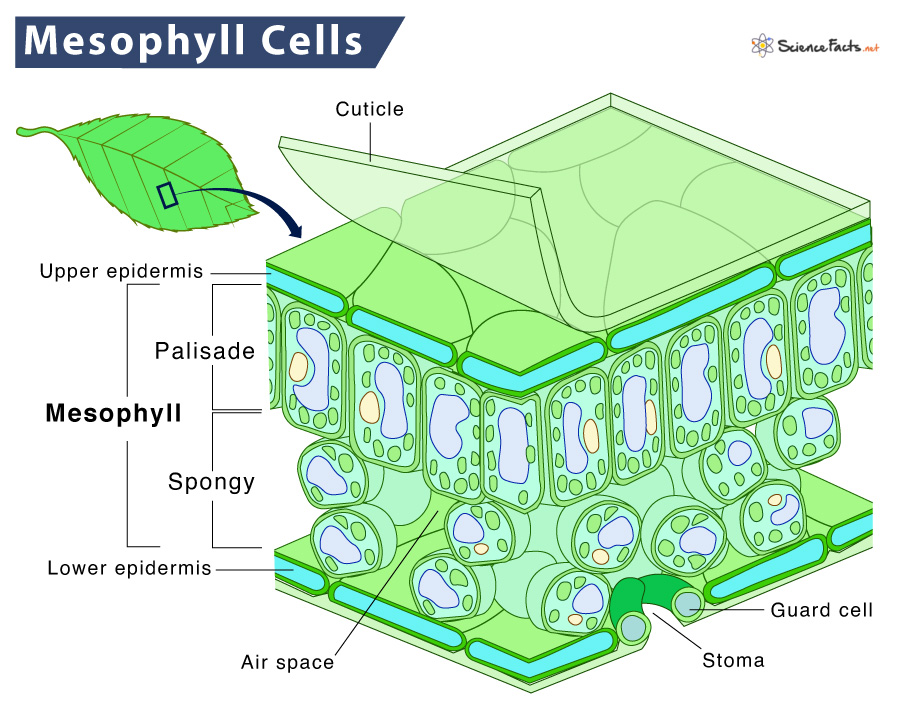
Give examples for prokaryotic cells
Bacteria
Blue-green algae
Mycoplasma
PPLO (Pleuro-pneumonia Like organism)
Four basic shapes of bacteria
Bacillus (rod like)
Coccus (spherical)
Vibrio (comma shaped)
Spirillum (spiral)
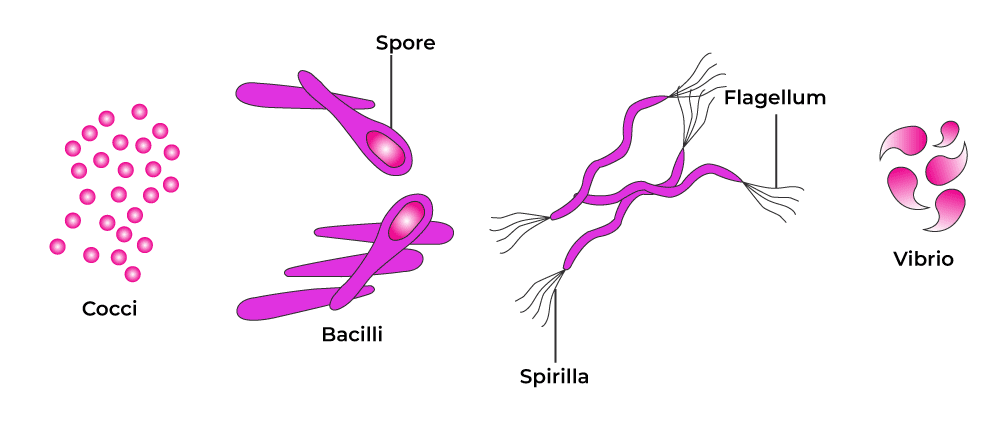
Features of prokaryotic cells
generally smaller than eukaryotic
divide more rapidly
vary greatly in shape and size
All prokaryotes have a ________ surrounding the cell except __________
Cell wall, mycoplasma
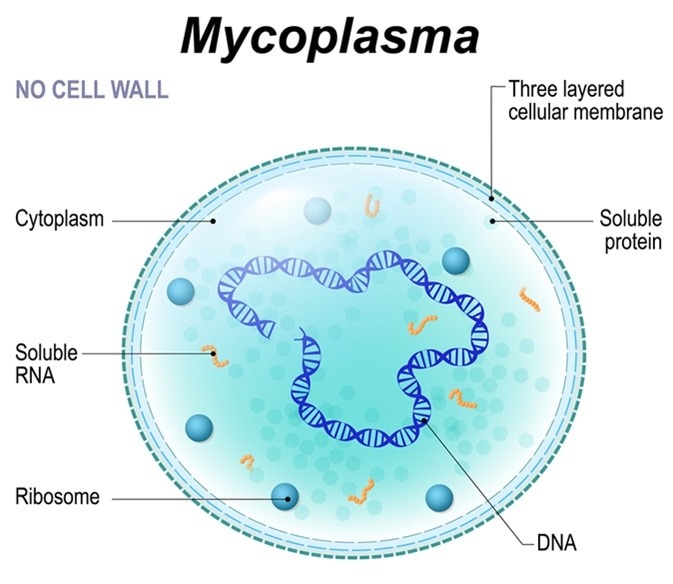
The semi-fluid matrix filling the prokaryotic cell is _______
cytoplasm
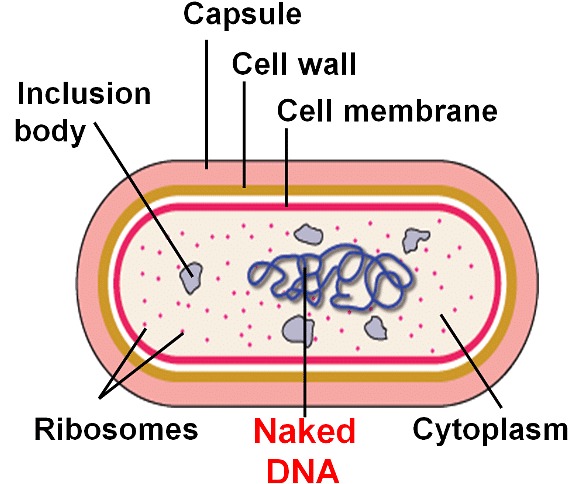
Where is the genetic material present in a prokaryotic cell?
The genetic material is not bound by a cell membrane and hence, it is suspended naked in a cytoplasm of a prokaryotic cell.
What is the genomic DNA in a prokaryotic cell?
Single chromosome/circular DNA
How many chromosomes does a prokaryotic cell have?
1, hence single chromosome
What is a single chromosome?
A single chromosome refers to a single, continuous molecule of DNA found in both prokaryotic and eukaryotic cells, but with different structures and arrangements. In prokaryotes, it's typically a single, circular DNA molecule. In eukaryotes, it's a linear DNA molecule packaged with proteins, forming a more complex structure.
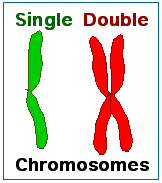
What is circular DNA
Circular DNA refers to DNA that forms a continuous loop, with no free ends. It's a closed structure, unlike linear DNA, which has distinct ends. This type of DNA is commonly found in prokaryotic cells, as well as in the organelles of eukaryotic cells like mitochondria and chloroplasts.
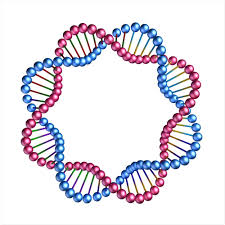
How do prokaryotic cells have single chromosome/circular DNA
A single chromosome refers to a single, continuous molecule of DNA found in both prokaryotic cells, hence called circular DNA. In prokaryotes, it's typically a single, circular DNA molecule.

Small circular DNA outside the genomic DNA is called _________
Plasmids
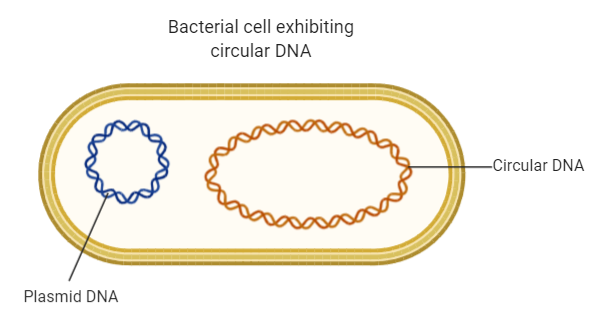
What do plasmids confer?
Plasmids confer (carry) phenotypic characters of the bacteria
What are phenotypic characters?
Phenotypic characters in prokaryotes are observable traits that can be used to distinguish and classify them. These traits include morphology (shape and size), growth characteristics, metabolic capabilities, and response to environmental factors.
Give example of a phenotypic character in prokaryotic cells
Resistance to antibiotics
What is resistance to antibiotics?
It refers to the observable trait of a microorganism that allows it to survive exposure to an antibiotic, which would normally kill or inhibit its growth. This resistance can arise from genetic changes (genotypic) or through non-heritable, metabolic or physiological adaptations (phenotypic).
https://my.clevelandclinic.org/health/articles/21655-antibiotic-resistance
Uses of plasmids
Laboratory manipulation of genes
Plasmids are essential tools for monitoring bacterial transformation, which is the process of introducing foreign DNA into bacteria. They serve as vectors, carrying the desired DNA into the bacterial cell. By incorporating specific marker genes, like antibiotic resistance genes, into the plasmid, scientists can easily select and identify bacteria that have successfully taken up the foreign DNA.
Which organelles are found in prokaryotic cells?
Only ribosomes
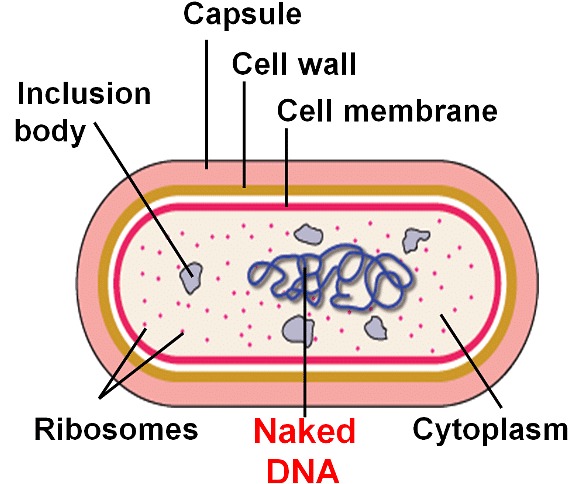
Prokaryotes have something unique in the form of ________
Inclusion bodies
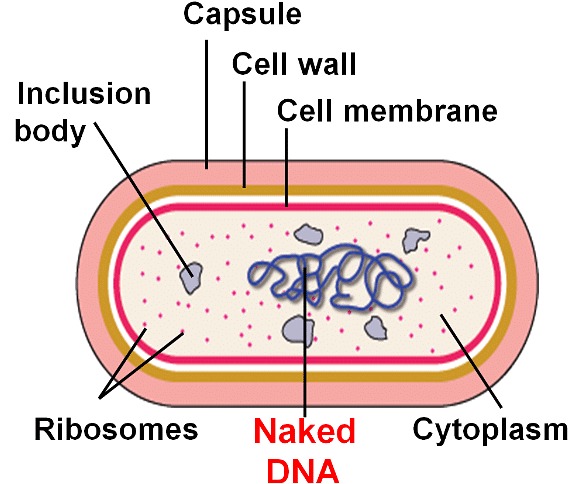
What are inclusion bodies?
Inclusion bodies are nuclear or cytoplasmic aggregates of stable substances like proteins/organic/inorganic compounds. They are used as storage units
A specialised differentiated form of cell membrane present in prokaryotes are called ________
Mesosomes
What are mesosomes?
Mesosomes are inner foldings of the cell membrane found in prokaryotic cells. These foldings:
increase surface area,
are sites of secretion,
respiration,
DNA replication and
assist in cell wall formation.
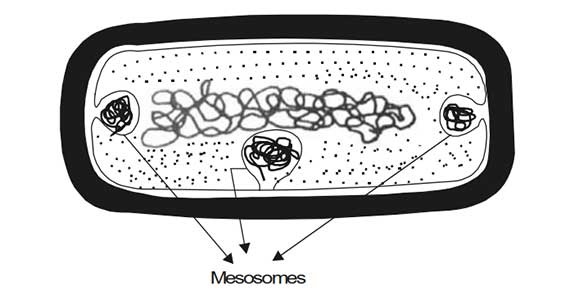
What is cell envelope in prokaryotic cells?
The outer protective covering of the cell is called cell envelope.
https://www.aakash.ac.in/important-concepts/biology/cell-envelopes-and-cell-membrane-invagination
Components of the cell envelope of a prokaryotic cell
Glycocalyx —> Cell Wall —> Cell Membrane
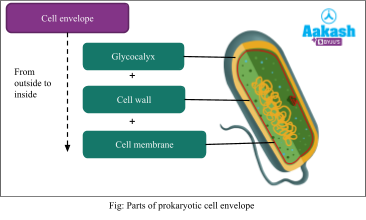
Bacteria can be classified into two groups on the basis of:
Differences in the cell envelope
The manner in which they respond to the gram staining procedure
What is gram staining?
Gram staining is a procedure by which bacteria are classified into Gram-positive and gram-negative bacteria
Gram positive: take up the gram stain
Gram negative: do not take up the gram stain

What is the difference between gram positive and gram negative bacteria?
Essentially, gram +ve bacteria take up the gram stain and -ve do not.
https://www.technologynetworks.com/immunology/articles/gram-positive-vs-gram-negative-323007

How does glycocalyx differ in different bacteria?
On the basis of composition and thickness
Glycocalyx in the form of loose sheath is called ________
slime layer
It is a form of a thin glycocalyx layer
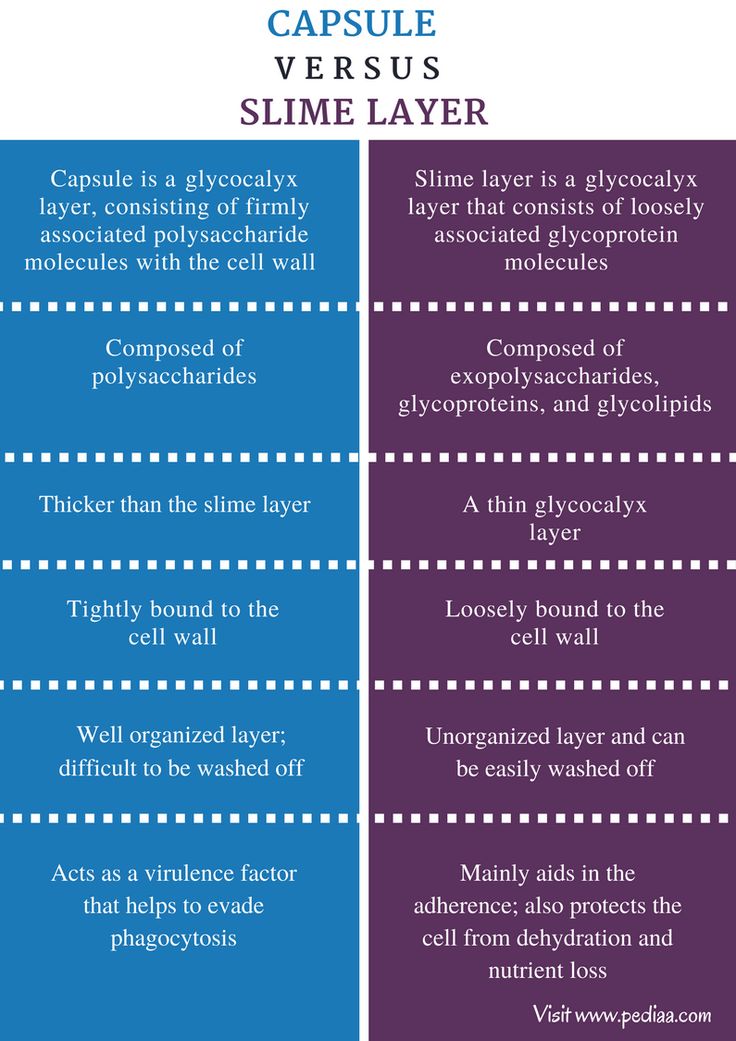
When the glycocalyx in some bacteria is thick and tough, it is called _________
Capsule
It is a form of a thick glycocalyx layer
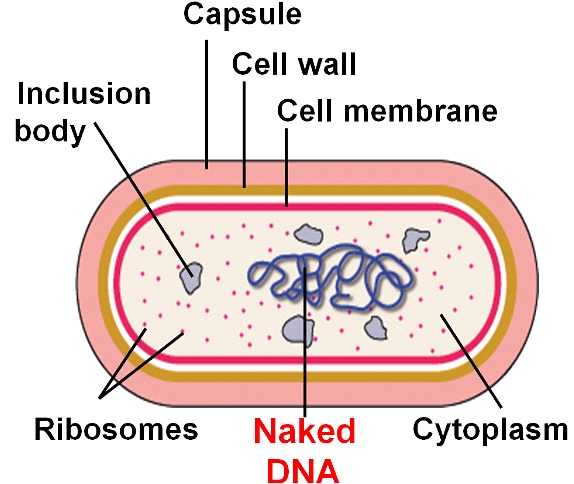
Function of the cell wall
Determines the shape of the cell
Prevents the bacterium from bursting/collapsing
Explain the structure of mesosomes
Extensions of the plasma membrane into the cell
Vesicles, Tubules, Lamellae
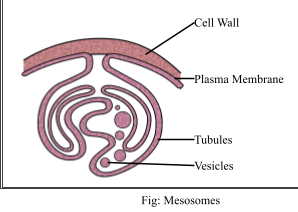
Functions of mesosomes (as in NCERT)
Cell wall formation
DNA replication
Distribution of daughter cells
Respiration
Secretion
Increase surface area of the plasma membrane and enzymatic contents
Other membranous extensions in bacteria such as cyanobacteria are called _________
chromatophores
What do chromatophores contain?
Pigments
Structure present on the walls of prokaryotic cells
Flagella
Pili
Fimbriae
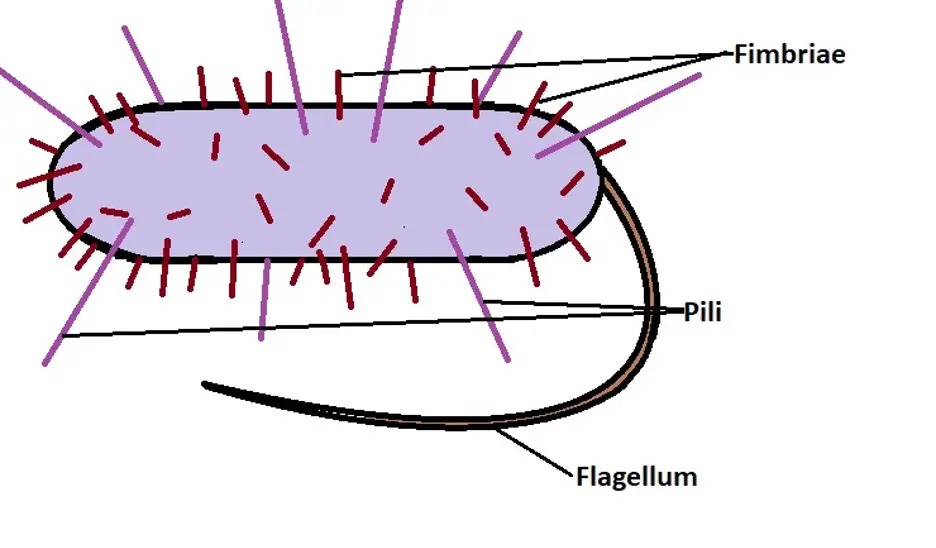
Motile bacteria have _______ for mobility
Flagella - thin filamentous extensions from the cell wall

Parts of bacterial flagellum
Filament (longest portion)
Hook
Basal Body
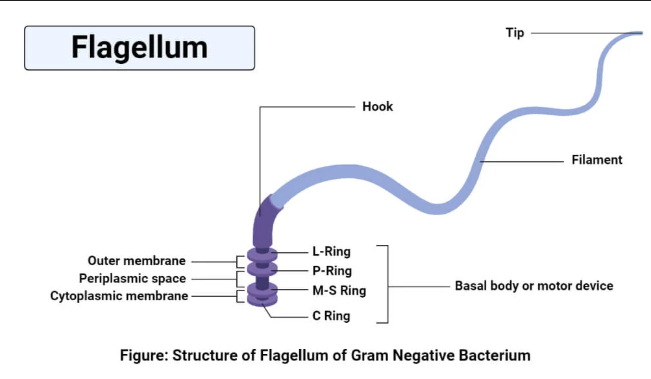
Other surface structures present in bacteria
Pili
Fimbriae

Pili
Elongated tubular structures made up of a special protein
Fimbriae
Bristle like fibres sprouting out of the cell
Uses:
Helping the bacteria attach to rocks in streams
To host tissues
Ribosomes in prokaryotes
A ribosome is a complex molecular machine composed of two subunits: a large subunit and a small subunit. The complete ribosome is formed when these two subunits come together, and it is this complete structure that is capable of carrying out protein synthesis. The subunits themselves are not functional for protein synthesis until they combine.
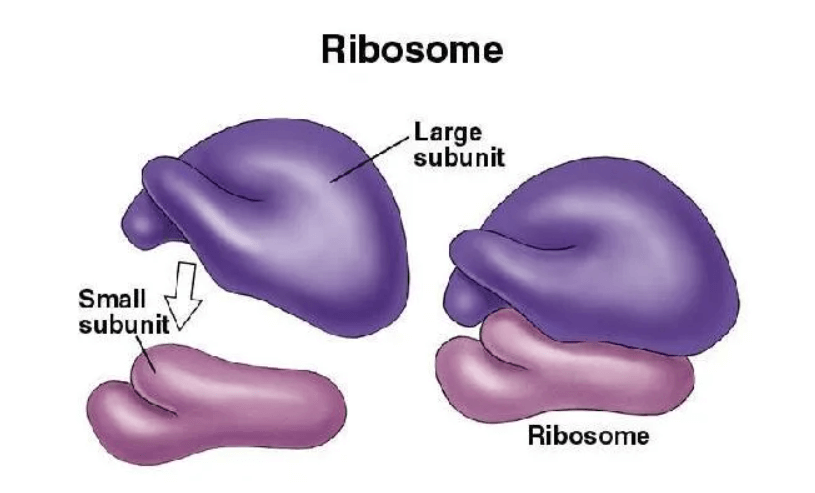
Size of ribosomes in prokaryotes
15-20 nm
Subunits of prokaryotic ribosomes
50S and 30S = 70S complete
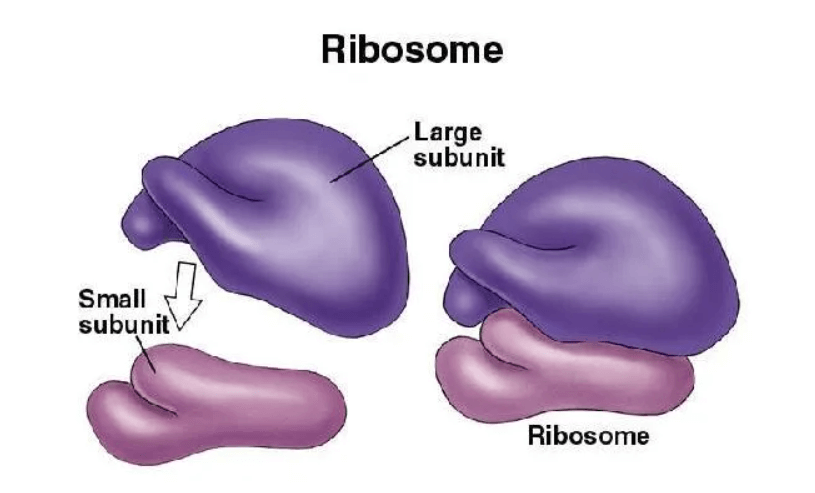
Why 50S+30S=70S in prokaryotic ribosomes?
The sedimentation rate of a complete ribosome is always less than the sum of its subunits.
What is S in 50S and 30S?
S is the sedimentation rate, also called the Svedberg unit
Function of ribosomes
Protein synthesis
what is mRNA
Messenger RNA or mRNA is involved in protein synthesis
Several __________ may attach to a single strand of mRNA and form a chain called __________ or ______________
ribosomes, polyribosomes, ribosomes
Function of a polysome
the ribosome of a polysome translate the mRNA into proteins, increase protein production efficiency.
Examples of inclusion bodies
Phosphate granules
Cyanophycean granules
Glycogen granules
Gas Vacuoles
Where are gas vacuoles found (prokaryotes)
Blue green and purple and green photosynthetic bacteria
Examples of Eukaryotes
protists
plants
animals
fungi
Features of eukaryotes (other than those mentioned earlier)
possess a variety of locomotory and cytoskeletal structures
their genetic material is organized into chromosomes
________, ________ and ________ are structures/ organelles present in plant cells but not in animal cells
Cell wall
Plastids
Vacuoles
_________ are present in animal cells but not in plant cells
Centrosomes
Composition of the cell membrane
Proteins and lipids
Features of lipids in the cell membrane
mainly phospholipids
arranged in a bilayer
polar head, hydrophobic tail
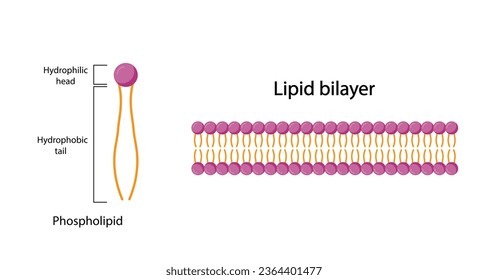
Why do the polar heads of the lipid bilayer face towards the outside?
In a phospholipid bilayer, the polar (hydrophilic) heads of the phospholipids face the outer sides (towards the aqueous environment, both inside and outside the cell) because they are attracted to water. Conversely, the nonpolar (hydrophobic) tails are directed inwards, away from the water, forming a barrier. This arrangement is energetically favorable and is the basis for the structure of cell membranes.
The polar heads ensure that the nonpolar tail of the saturated hydrocarbons is protected from the aqueous environment

What is the nonpolar tail/ hydrophobic tail made up of?
saturated hydrocarbons
Apart from phospholipids, the cell membrane also contains _______
Cholesterol

Apart from the lipid bilayer, the cell structure is also composed of _________ and ________
proteins and carbohydrates
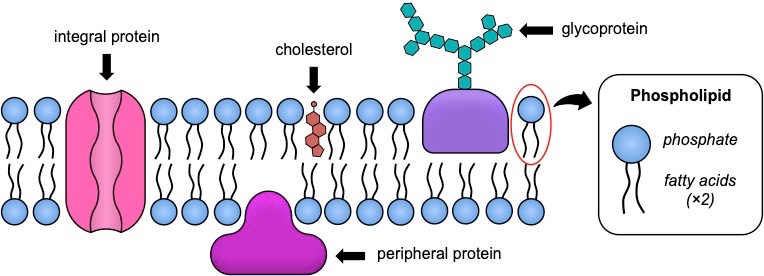
What are erythrocytes?
Oxygen-carrying RBCs
Ratio of proteins and lipids in erythrocytes
52% protein
40% lipids
Types of membranous proteins (cell membrane)
Integral Proteins: partially/totally buried b/w the lipid layer
Peripheral Proteins: located on the surface
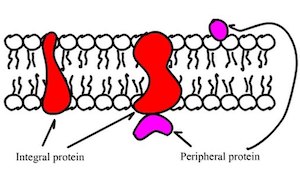
The fluid mosaic model
The fluid mosaic model describes the structure of cell membranes as a dynamic combination of lipids, proteins, and carbohydrates that are constantly moving and interacting. It emphasizes the membrane's fluidity and the mosaic-like arrangement of its components.
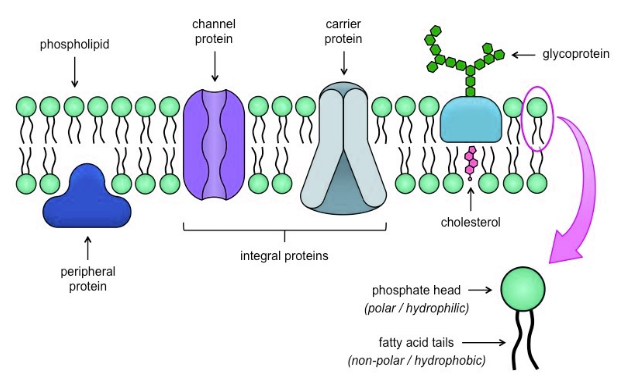
What is the nature of lipids in the cell membrane?
Quasi-Fluid
(A quasi-fluid is a material that exhibits characteristics of both a fluid and a solid, meaning it can flow like a fluid under certain conditions while also maintaining some structural rigidity. This "partial" fluidity is due to the material's ability to deform and move while still possessing a degree of structural integrity.)
What does this quasi-fluid nature of lipids enable?
Lateral movement of proteins within the overall lipid bilayer - fluidity
Why is the fluid nature of the cell membrane important
cell growth
formation of intercellular junctions
endocytosis
cell division
secretion